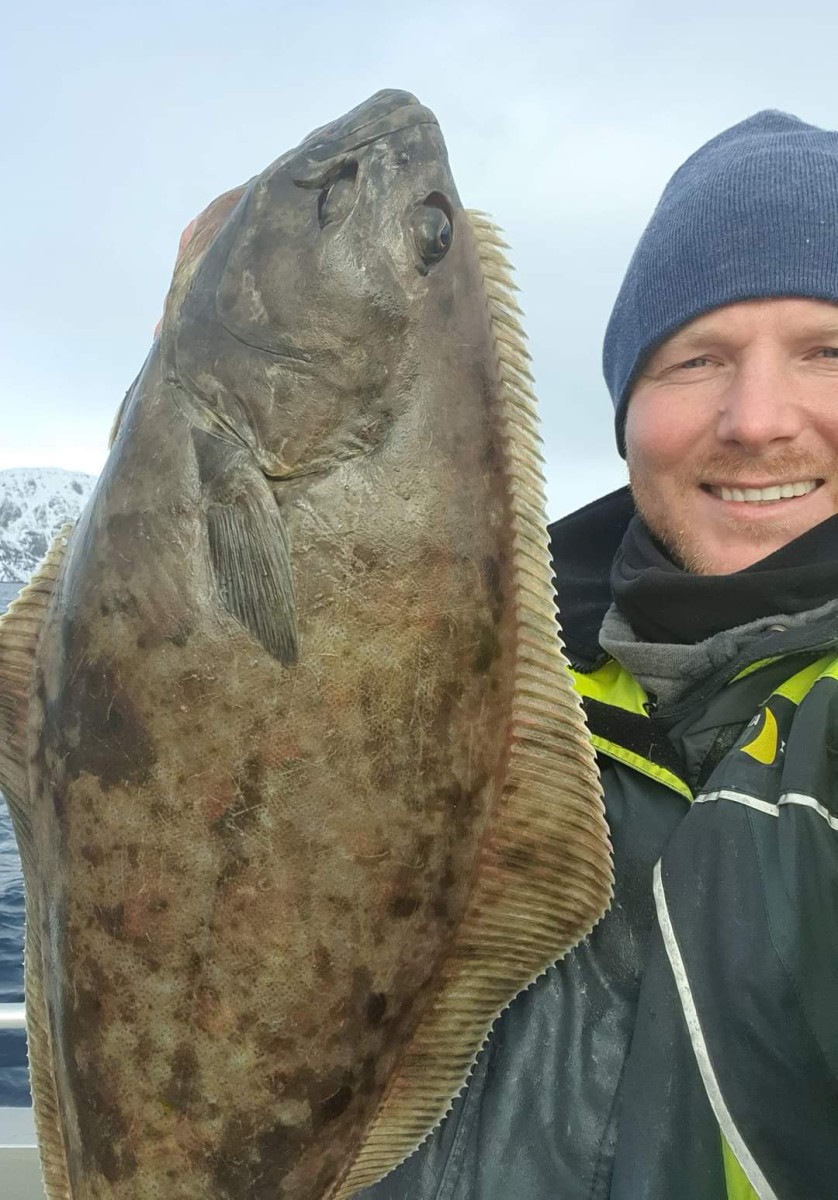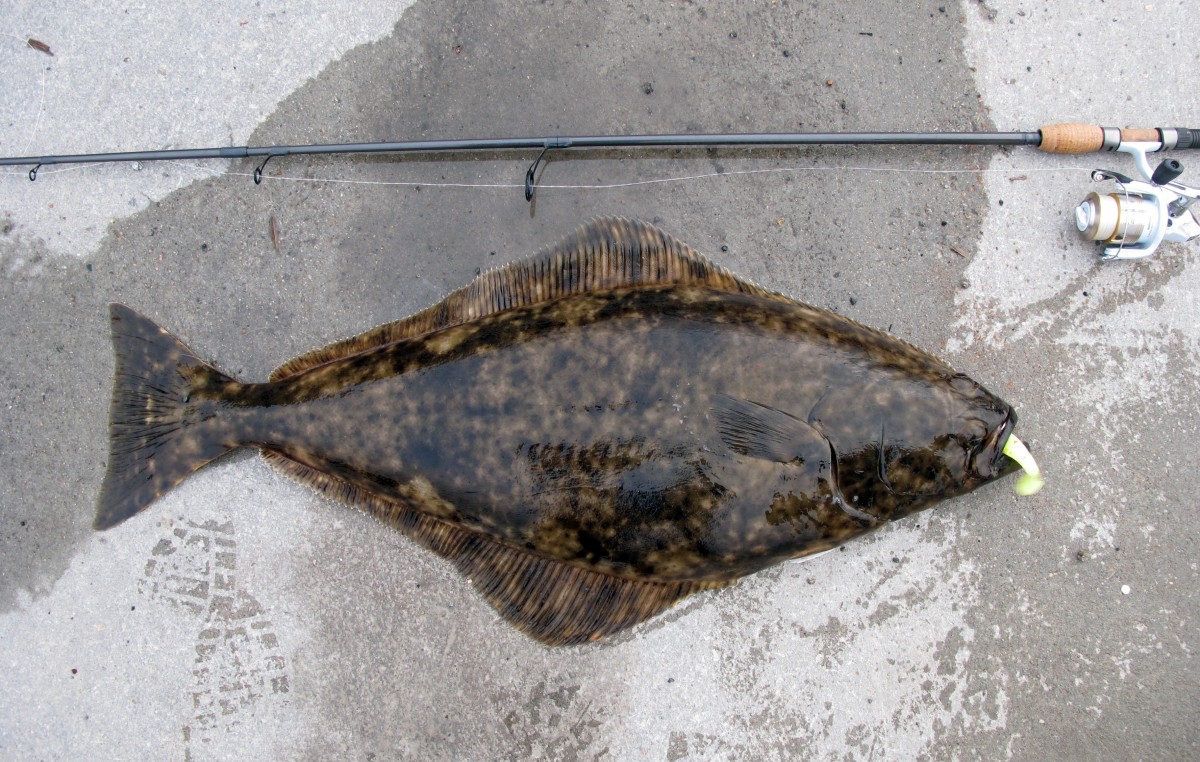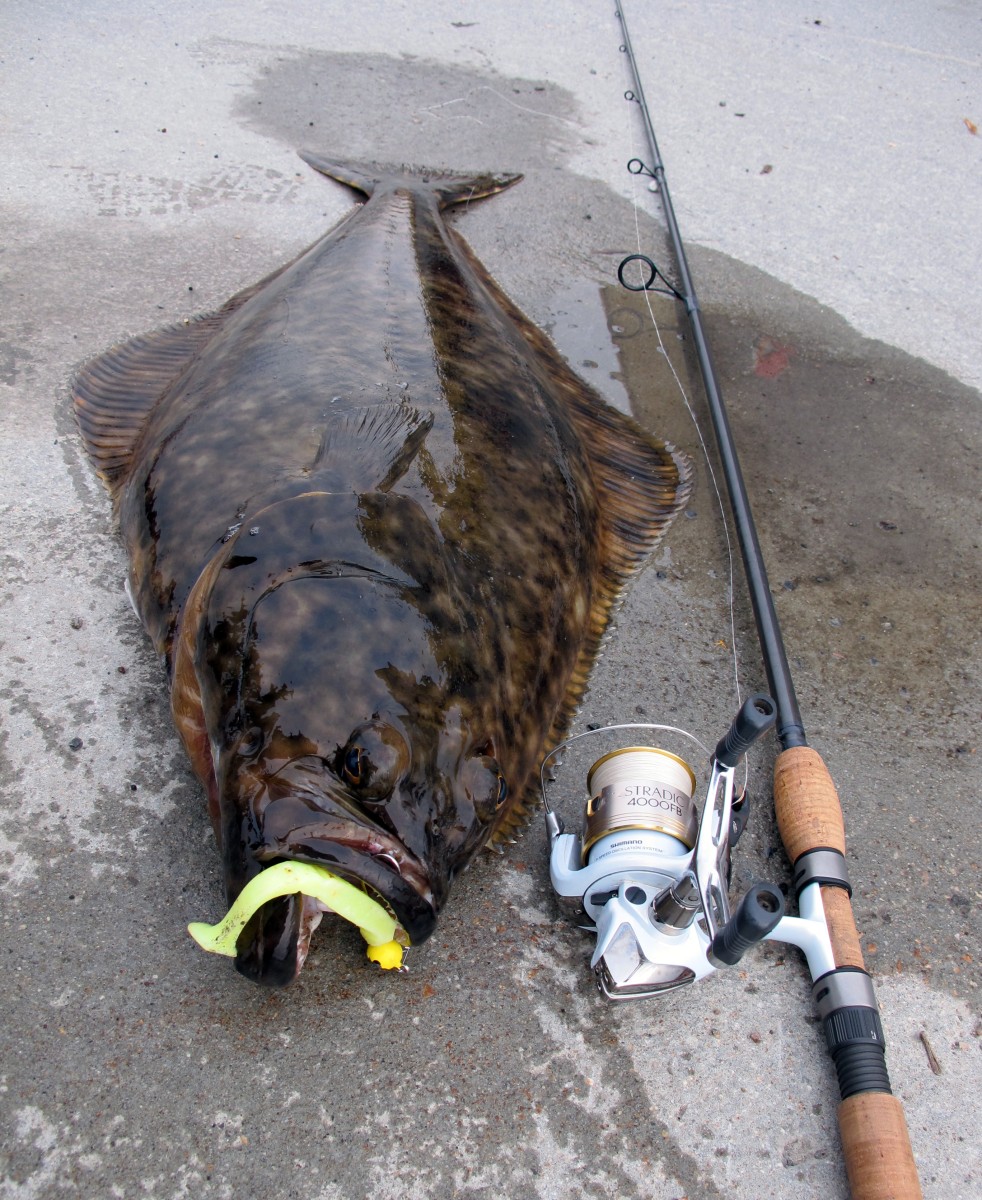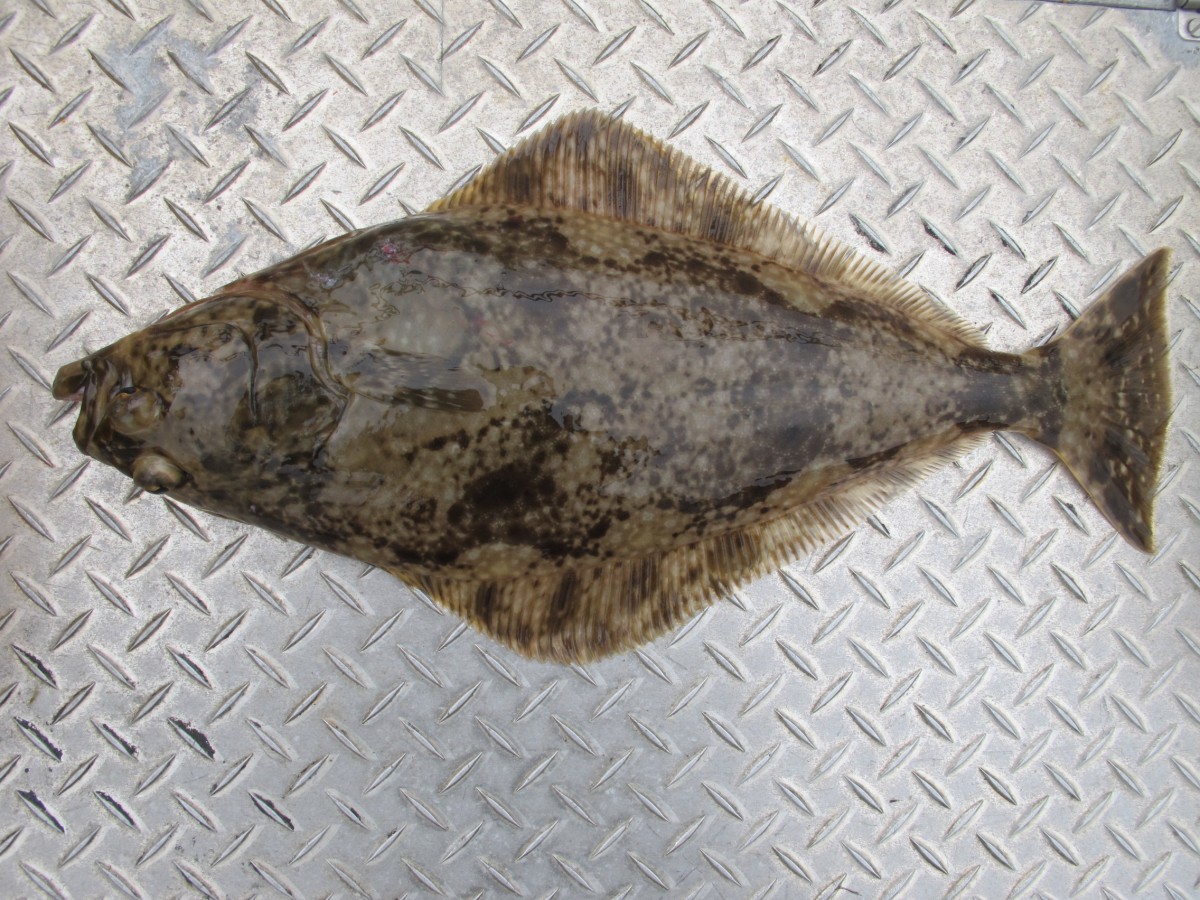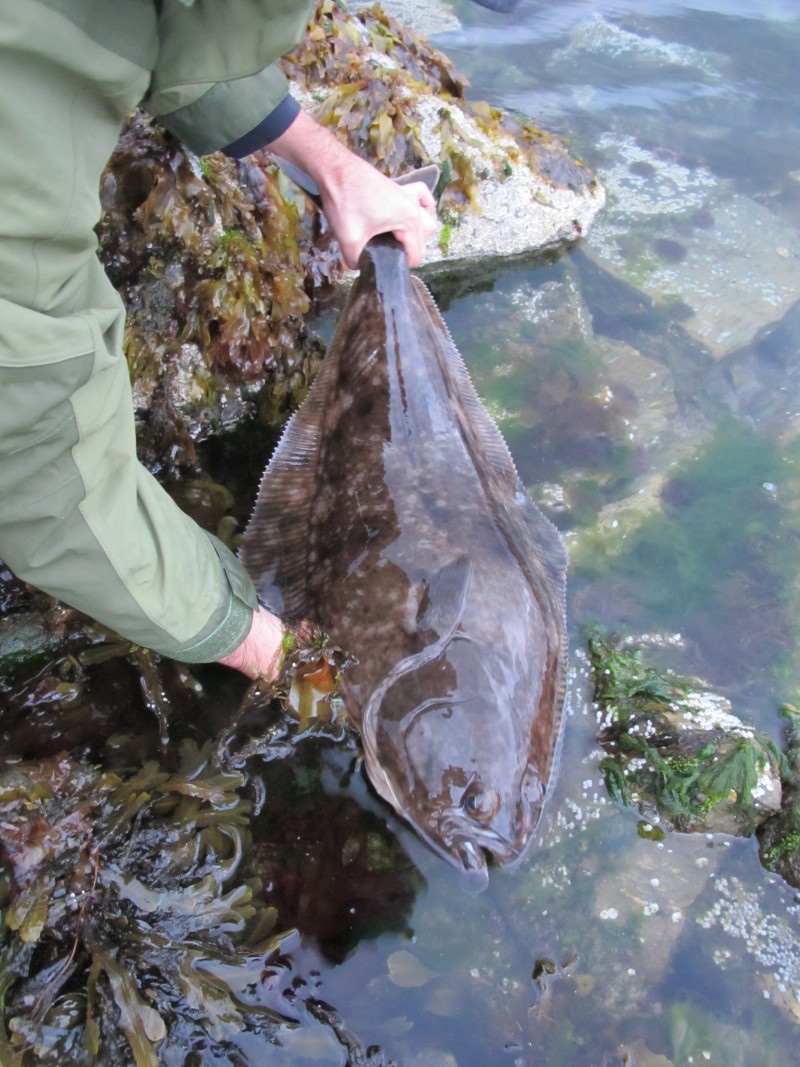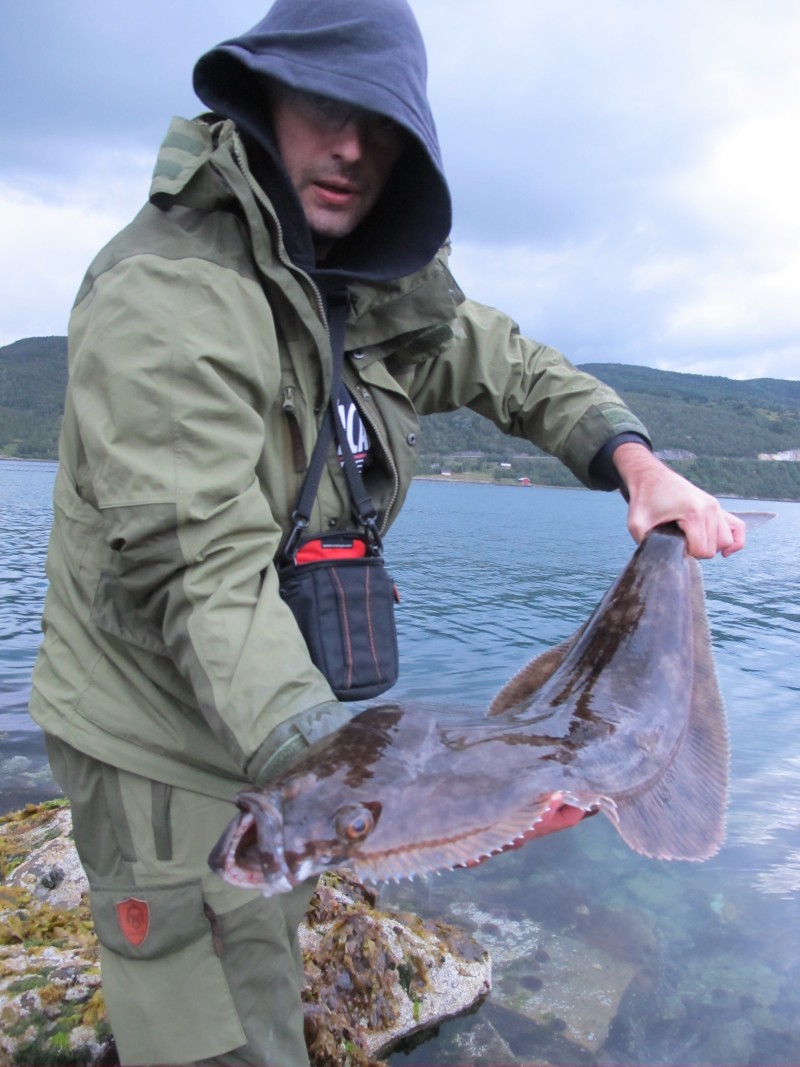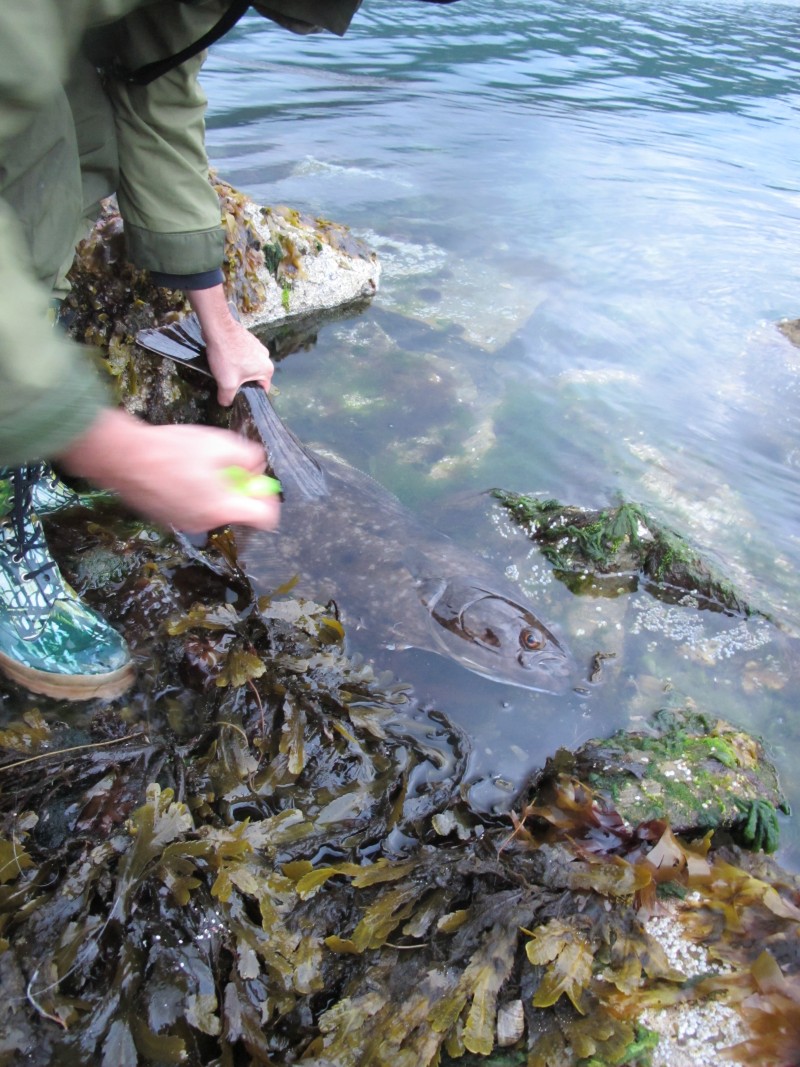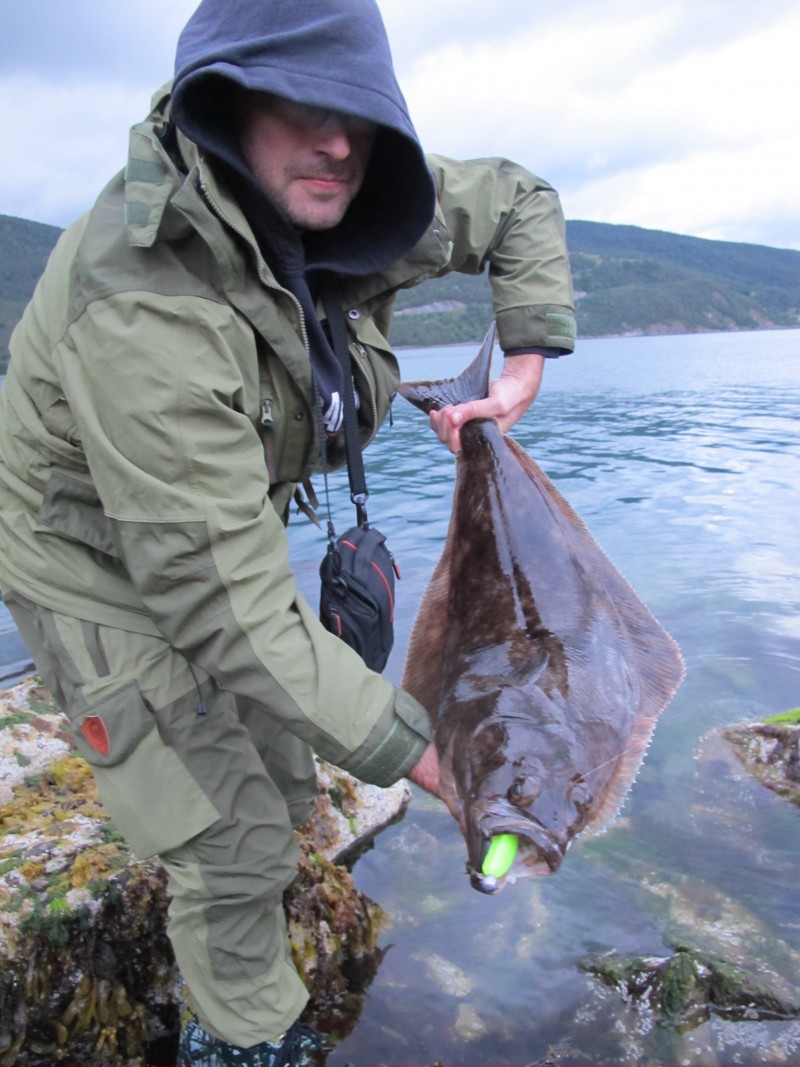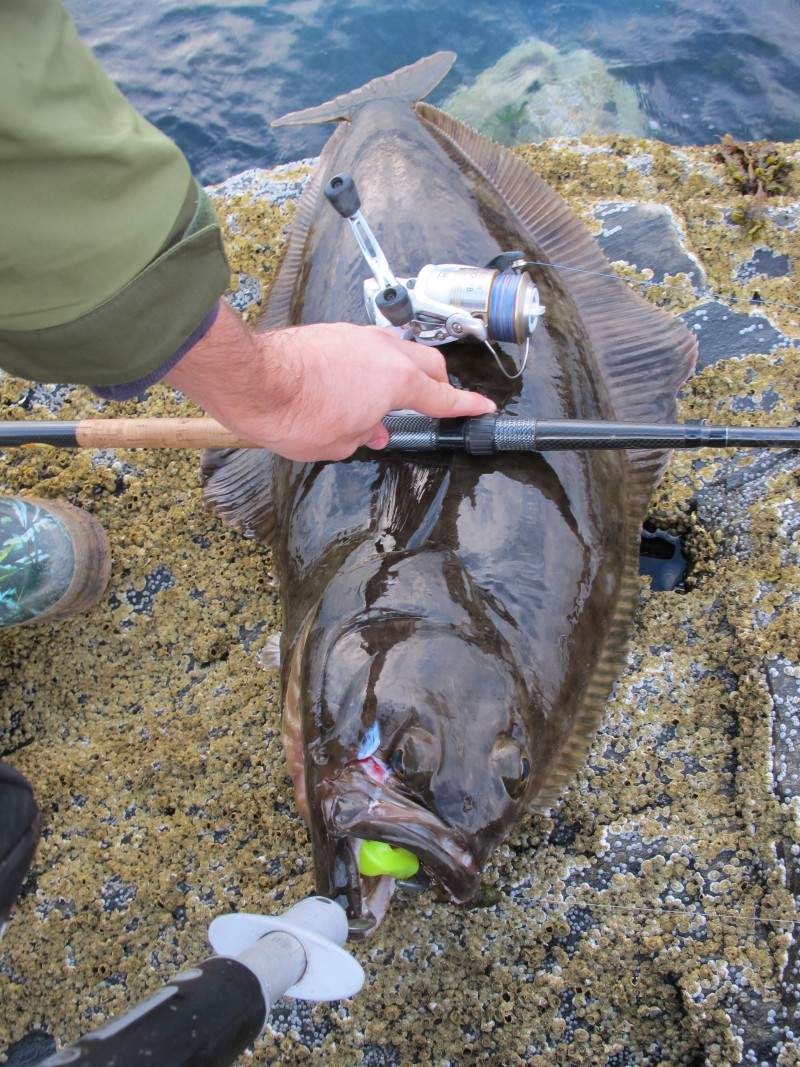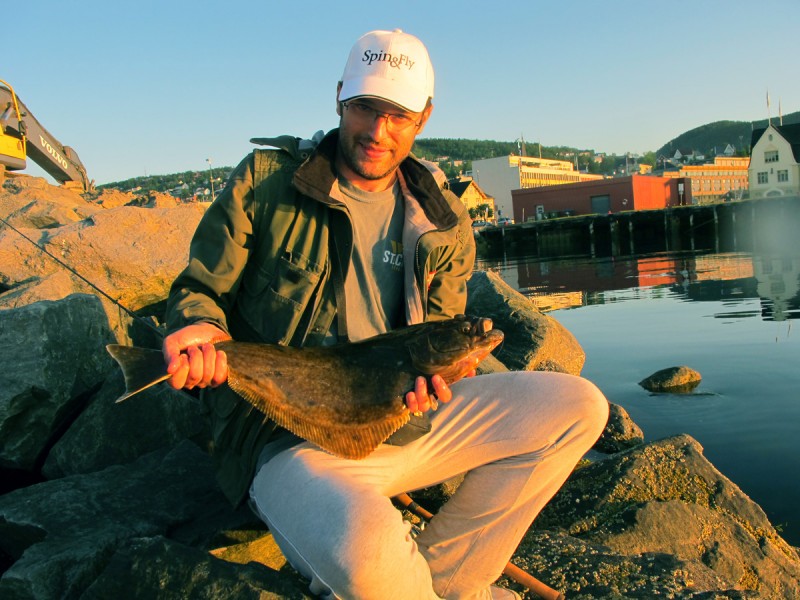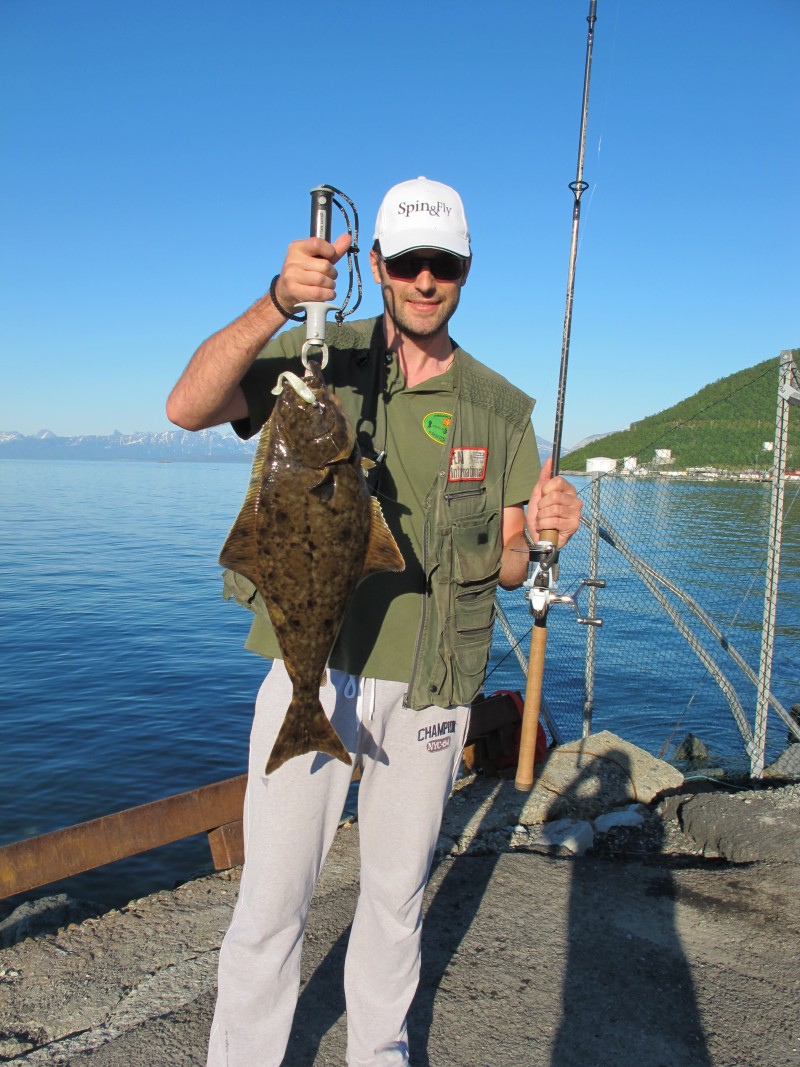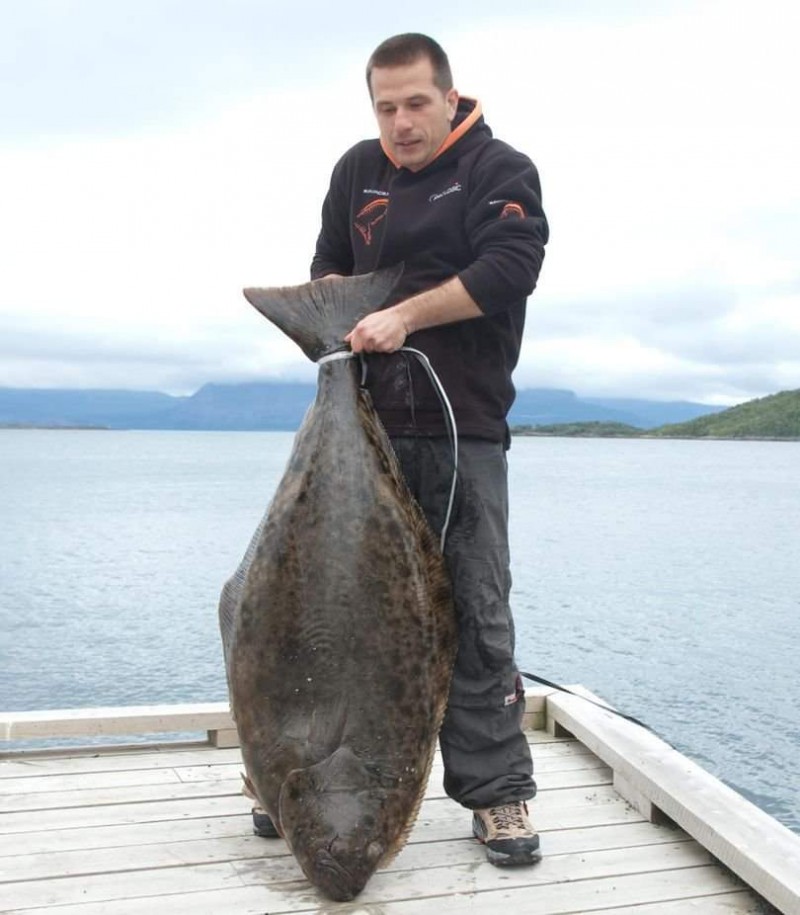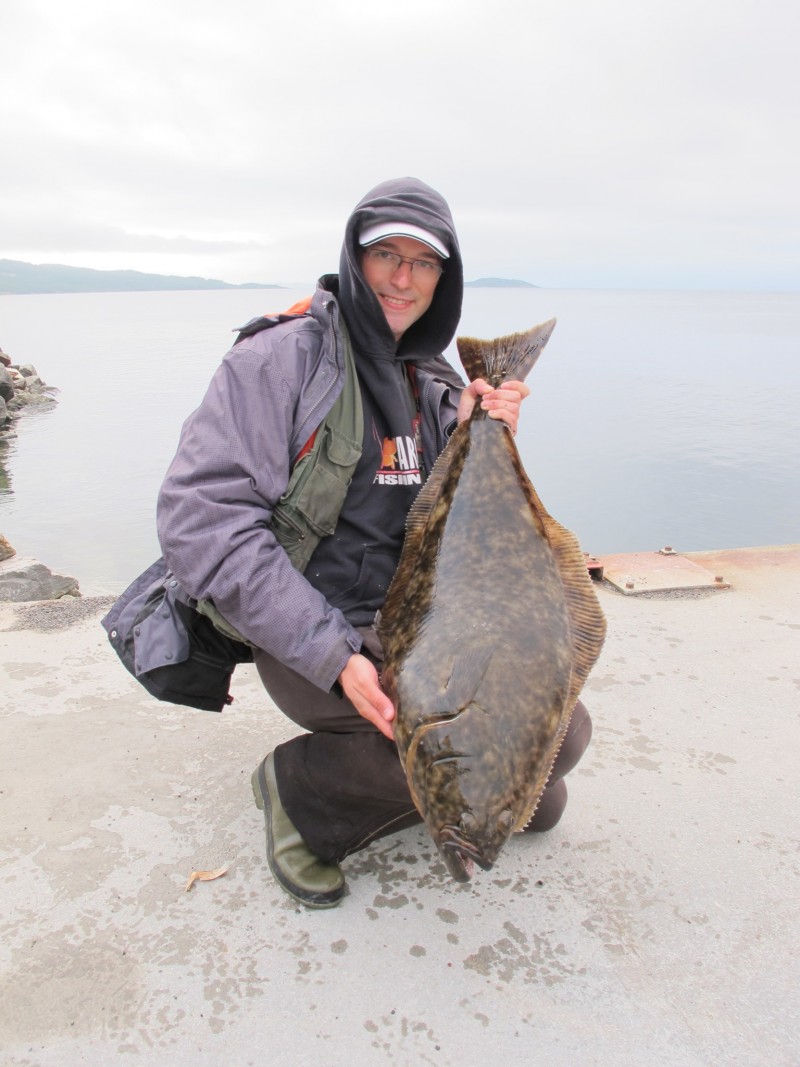Atlantic halibut
(Hippoglossus hippoglossus)
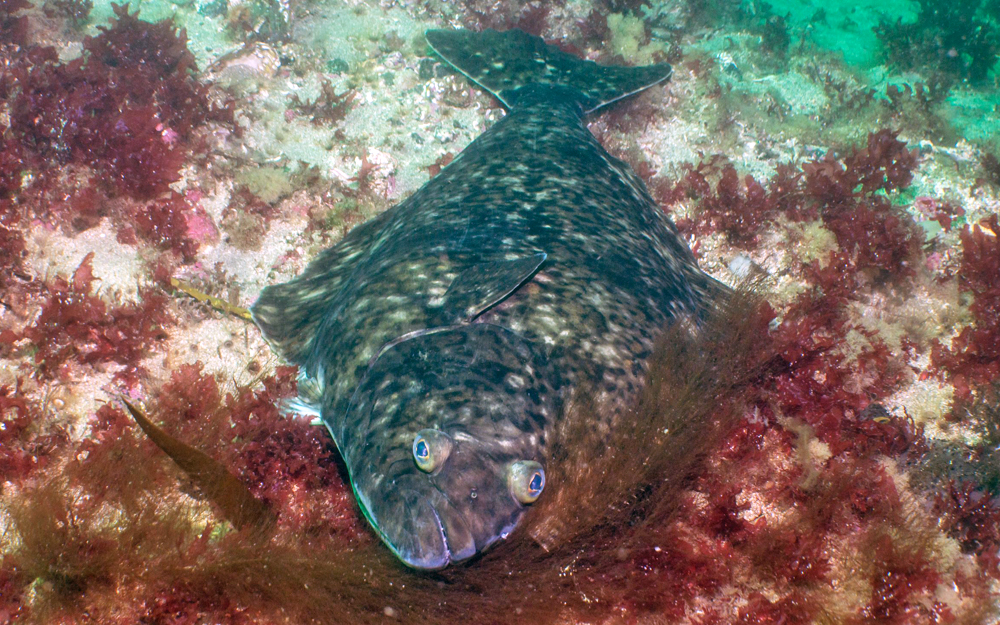
Classification
General data
The Atlantic halibut (Hippoglossus hippoglossus) is a flatfish of the family Pleuronectidae. They are demersal fish living on or near sand, gravel or clay bottoms at depths of between 50 and 2,000 m (160 and 6,560 ft). The halibut is among the largest teleost (bony) fish in the world, and is an endangered species due to a slow rate of growth and overfishing. Halibut are strong swimmers and are able to migrate long distances. Halibut size is not age-specific, but rather tends to follow a cycle related to halibut (and therefore food) abundance.
The native habitat of the Atlantic halibut is the temperate and arctic waters of the northern Atlantic, from Labrador and Greenland to Iceland, the Barents Sea, and as far south as the Bay of Biscay and Virginia. It is the largest flatfish in the world, reaching lengths of up to 4.7 m (15 ft) and weights of 320 kg (710 lb). Its lifespan can reach 50 years.
Age can be estimated by counting the rings laid down inside the otolith - a boney structure found inside the inner ear of the fish.
